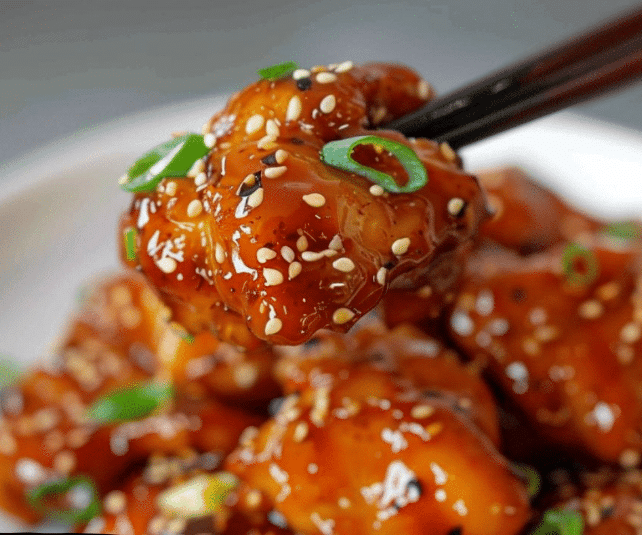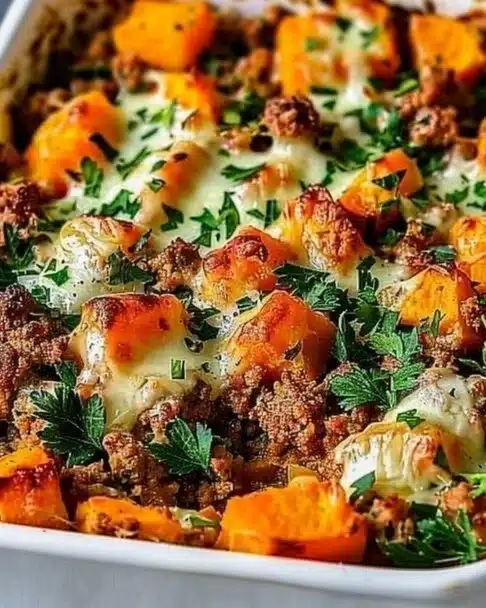25 Vegetable Casseroles That Are Packed With Flavor and Nutrition
Looking to add more veggies to your dinner table without sacrificing flavor or comfort? These 25 vegetable casseroles are the ultimate solution. Whether you’re cooking for your family, prepping for the week, or just craving something warm and nourishing, these recipes hit the spot.
Table of Contents
Casseroles are known for their versatility and ease, but when you go the vegetable route, you unlock a whole new level of health benefits. From fiber-rich greens to antioxidant-loaded root vegetables, these dishes are more than just tasty—they’re a nutritional powerhouse. In fact, incorporating a wider variety of vegetables in your diet has been linked to improved digestion, better heart health, and even mood enhancement according to Harvard’s research on vegetable nutrition.
But making the perfect casserole is more than just tossing veggies into a baking dish. Knowing which ingredients to combine and how to layer them can make all the difference. Whether you’re new to veggie casseroles or a seasoned home cook, these casserole cooking tips will ensure your dish is perfectly cooked, well-textured, and bursting with flavor every time.
What Makes a Great Vegetable Casserole?
A standout vegetable casserole hits the sweet spot between texture, flavor, and nutrition. Here’s what to keep in mind:
- Texture balance: Combine soft, creamy elements (like mashed potatoes or cheese sauces) with crispy or crunchy toppings.
- Flavor pairing: Use bold herbs, spices, and umami-rich ingredients like mushrooms and tomatoes.
- Sauce matters: A good béchamel, tomato sauce, or creamy plant-based substitute ties it all together.
The Ultimate List: 25 Best Vegetable Casserole Recipes
Each recipe below includes a brief description and key ingredients, giving you plenty of options to suit every taste and dietary need.
- Cheesy Asparagus & Bacon Casserole
A spring favorite featuring asparagus, cheddar cheese, and smoky bacon. - Zucchini Casserole with Garlicky Breadcrumbs
Light, crisp, and packed with zucchini, Parmesan, and seasoned breadcrumbs. - Sweet Potato & Black Bean Casserole
Sweet, savory, and loaded with plant-based protein. - Broccoli & Cauliflower Bake
A creamy, low-carb twist on the classic mac & cheese. - Eggplant Parmesan Casserole
Layers of breaded eggplant, marinara, and mozzarella. - Cabbage Roll Casserole
A deconstructed version of the comfort food favorite using ground veggies and rice. - Corn & Zucchini Casserole
Sweet corn, summer squash, and cheddar in a creamy base. - Mushroom and Wild Rice Bake
Earthy mushrooms, wild rice, and herbs make this dish hearty and filling. - Ratatouille Casserole
A colorful, Mediterranean-style dish with tomatoes, zucchini, and eggplant. - Spinach & Artichoke Bake
A spin on the popular dip, transformed into a creamy, low-carb entree. - Squash & Goat Cheese Gratin
Butternut squash paired with tangy goat cheese and herbs. - Vegan Lentil Shepherd’s Pie
Hearty lentils and mashed potatoes replace traditional meat fillings. - Mexican Vegetable Bake
Black beans, corn, and tomatoes seasoned with cumin and chili powder. - Cauliflower Mac & Cheese
A cheesy classic, made lighter with cauliflower florets. - Tomato & Chickpea Casserole
Tangy tomatoes and protein-packed chickpeas in a cozy stew-like bake. - Green Bean Casserole (Classic & Vegan)
A holiday staple made with crispy onions and a creamy base—vegan version included. - Brussels Sprouts Au Gratin
Thinly sliced sprouts baked in a cheese sauce with breadcrumbs. - Potato & Kale Gratin
Comforting layers of thin potatoes and sautéed kale. - Mediterranean Orzo Veggie Bake
Orzo pasta, cherry tomatoes, olives, and feta bring a sunny vibe. - Creamed Corn Casserole
Sweet corn, butter, and sour cream combine in this comforting dish. - Carrot & Quinoa Bake
Packed with quinoa, carrots, and fresh herbs—great as a main or side. - Broccoli Rice Casserole
An easy crowd-pleaser combining broccoli, rice, and a creamy cheese sauce. - Tofu & Mixed Vegetable Casserole
Protein-rich tofu with stir-fry veggies and a savory soy glaze. - Leek & Mushroom Gratin
Delicate leeks, earthy mushrooms, and Gruyère cheese baked to golden perfection. - Butternut Squash Casserole
A fall favorite with roasted squash, sage, and a crunchy pecan topping.

Health Benefits of Vegetable Casseroles
Vegetable casseroles are more than just tasty—they’re incredibly good for you. Here’s why they should be a staple on your weekly menu:
- High in fiber: Improves digestion and keeps you feeling full longer.
- Nutrient-dense: Packed with vitamins, minerals, and antioxidants.
- Lower in calories: Especially compared to meat-based alternatives.
- Adaptable for dietary needs: Easily made gluten-free, dairy-free, or vegan.
For more information about the health perks of vegetarian meals, this guide on vegetarian diets is a great resource.
Customizing Your Vegetable Casserole
You can make nearly any casserole your own by mixing and matching ingredients based on your preferences or what you have on hand.
Ways to customize:
- Swap vegetables: Use seasonal options like pumpkin, Swiss chard, or bell peppers.
- Add grains or legumes: Include quinoa, brown rice, lentils, or beans.
- Use dairy alternatives: Swap cheese for vegan options like nutritional yeast or cashew cream.
Tips for the Best Casseroles Every Time
To make sure your vegetable casserole comes out perfect:
- Layer smartly: Start with grains or denser veggies at the bottom.
- Pre-cook watery vegetables: Zucchini, mushrooms, and spinach should be lightly sautéed or roasted first.
- Let it rest: Wait 5–10 minutes after baking to help everything set.
Serving Suggestions
Not sure what to serve with your casserole? Here are some great pairings:
- Fresh green salad with vinaigrette
- Whole grain bread or rolls
- Roasted potatoes or sweet potatoes
- Soup starters like tomato basil or minestrone
They’re great as stand-alone meals or as hearty sides for larger spreads.
FAQs
What vegetables go well in a casserole?
Almost any! Try root vegetables (carrots, potatoes), cruciferous veggies (broccoli, cauliflower), and leafy greens (spinach, kale).
How do you keep a vegetable casserole from getting watery?
Sauté or roast vegetables first to remove excess moisture, especially with high-water veggies like zucchini and mushrooms.
Can you make vegetable casseroles ahead of time?
Yes! Assemble the night before and refrigerate. Bake fresh the next day or reheat leftovers.
Are vegetable casseroles healthy?
Absolutely, especially when you use whole ingredients and limit heavy creams and cheeses.
How do I make a vegan vegetable casserole?
Use plant-based milks, cashew cheese, and nutritional yeast. Replace eggs with flax or chia mixtures if needed.
What’s the best way to reheat a casserole?
Use the oven for best texture (350°F for 20–25 minutes). Microwaves work too, but may soften crispy toppings.
Final Thoughts
Whether you’re feeding picky eaters, trying Meatless Mondays, or simply want more veggies on your plate, vegetable casseroles are the answer. With so many flavors, textures, and styles to explore, you’re sure to find several favorites on this list. So grab your casserole dish and start experimenting—comfort food just got a whole lot healthier.






